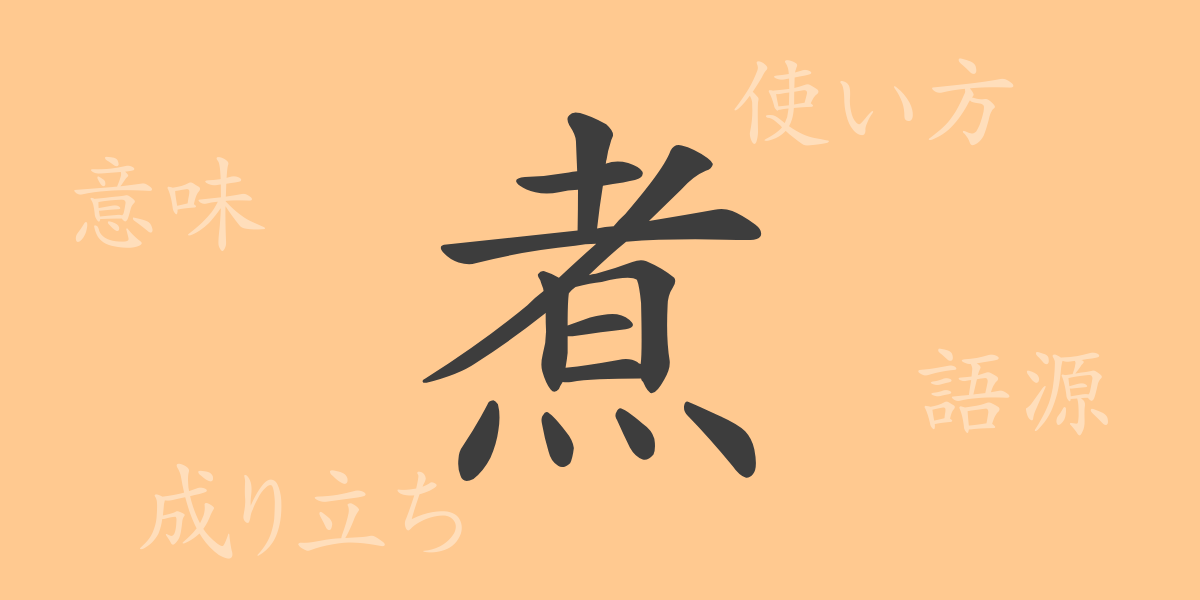The kanji “煮(に)” is deeply rooted in Japanese culinary culture. While this character may seem to simply denote a cooking method, its formation and meaning reflect a rich history and culture. This article explores the kanji “煮(に)” from its etymology, readings, meanings, and usage, to the idioms and proverbs that incorporate it. Through uncovering the stories behind commonly used kanji, we can rediscover the charm of language.
Origins of 煮(に) (Etymology)
The kanji “煮(に)” refers to a cooking method that uses heat to soften food. This character originates from ancient Chinese pictographs. The top part, “火(ひ),” clearly represents flames, while the bottom part, “而(じ),” originally symbolized hair but is interpreted here as cooking ingredients. Thus, “煮(に)” visually represents the act of cooking ingredients with fire.
Meanings and Uses of 煮(に)
“煮(に)” refers to the method of cooking ingredients by heating them in liquid to soften and infuse them with flavor. As a verb, it is used in various forms such as “煮る(にる)” (to boil), “煮える(にえる)” (to be boiled), and “煮込む(にこむ)” (to stew). Figuratively, it can also mean taking time to consider something thoroughly or letting something develop deeply.
Readings, Stroke Count, and Radical of 煮(に)
The kanji “煮(に)” has multiple readings in Japanese.
- Readings: The on’yomi (音読み) is “シ,” and the kun’yomi (訓読み) includes “にる(にる),” “にえる(にえる),” and “にやす(にやす).”
- Stroke count: It has a total of 12 strokes.
- Radical: It belongs to the 火部 (かぶ) radical, also known as “れんが” or “ひへん.”
Idioms, Phrases, and Proverbs Using 煮(に)
The kanji “煮(に)” is found in many Japanese expressions. For example, “煮詰まる(につまる)” means to reach an impasse, “煮え切らない(にえきらない)” describes indecisiveness, and “煮るにも焼くにも使えない(にるにもやくにもつかえない)” refers to someone who is utterly useless. Additionally, “煮しめる(にしめる)” not only refers to a method of cooking ingredients by simmering them to infuse flavor but also means to think something through carefully.
Conclusion on 煮(に)
The kanji “煮(に),” closely tied to the daily lives of Japanese people, carries meanings far beyond a simple cooking method. Its broad usage, from its etymology to idioms, shows its significant role in the language. Behind the “煮(に)” used at the dining table every day, there is a long history and culture. We hope this article helps you appreciate the deep meanings of a single kanji and the richness of the language.

























